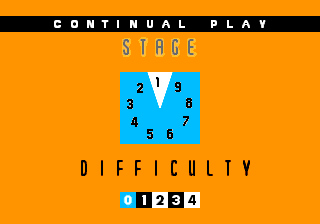

- Zoop in and out with screenium how to#
- Zoop in and out with screenium manuals#
- Zoop in and out with screenium update#
- Zoop in and out with screenium full#
I know doesn’t add to functionality but it’s an attention to detail that I appreciate.

As you hover over each icon, they will animate and move towards you to show that they’re in focus.
Zoop in and out with screenium full#
Screenium has a Start window with four options for screen capture: Area, Full Screen, Single Window and iOS/tvOS Device. I’ll walk through at the big picture level how Screenium works and how it’s different from other screencasting apps. I said it’s “along the lines of” the other screencasting apps because while it meets the same end goal, the approach in some aspects is vastly different from the other tools. Now that I’ve given you the background, I’d like to talk about Screenium itself and what makes it such an interesting application. Even with breaking it in half, I think it’s going to be really hard to keep the advanced tutorial under the goal of 40 minutes! Brissette, my producer at ScreenCastsOnline, and his advice was to break it up into a basic and advanced tutorial, which is exactly what I’ve done. As I was learning the app and making my mind map and reading the (awesome) user manual, I realized that there was no way I could do this app justice in just 30-40 minutes. I assumed that a $27 screencasting app must not be very capable, but thought maybe it would be useful for people with very limited needs. These apps are $129 and $100 respectively, but in contrast, Screenium lists for $55 and has been on sale for over a year for $27 in the Mac App Store! The developer told me they dropped the price when everyone had to start working from home, and that they plan on keeping the price that low for the foreseeable future. Screenium is a screencasting app, along the lines of ScreenFlow from Telestream (which is what we use at ScreenCastsOnline) or Camtasia from Techsmith. You may have also seen their app Mac Family Tree. You may recognize the name of the company – they’re the folks who make Logoist, which I’ve talked about on the show and for which I also did a ScreenCastsOnline tutorial. The app in question is Screenium from Synium Software at. I made this assumption based on the price, and I couldn’t have been more wrong. Last week I started doing a tutorial on an app that I assumed would be fairly simplistic and easy to fit within the 30-minute window.

Zoop in and out with screenium update#
Sometimes you’re halfway through the process when the developer decides to put out a major update and it messes up everything you’ve done.īut there’s one thing that has never happened to me in this process before now. Often software turns out to be buggy and we definitely have to change horses when that happens. Maybe the app turns out to be too simplistic to be worthy of a 30-40 minute tutorial. One of the huge pitfalls in doing these tutorials, as any of the ScreenCastsOnline staff will tell you, is that partway through working on an app, you discover it isn’t what you thought it was when you decided to do the tutorial. For example, in some apps, the only logical place to start is with the Preferences (like Bartender 4) but with other apps, the Preferences are sort of the bow on top at the end.
Zoop in and out with screenium how to#
I just fling my discoveries onto the mind map and as I work my way through the app, I start to reorganize the topics into a story of how to use the app.
Zoop in and out with screenium manuals#
I know that I pretend I never read manuals but it’s actually not true I often read the manual for more complex tools.Īs I work my way through learning the app, I create a mind map using my beloved iThoughts from Toketaware. I start by poking every button and control in the app to figure out what it does, and I explore every preference and option. In order to make a tutorial, I have to really understand the tool. There are a lot of pitfalls when choosing a tool to teach. It’s absolutely true that the best way to learn something is to teach it. I enjoy making the tutorials because it forces me learn new tools really well. I’ve been making video tutorials for ScreenCastsOnline for around 5 years.


 0 kommentar(er)
0 kommentar(er)
